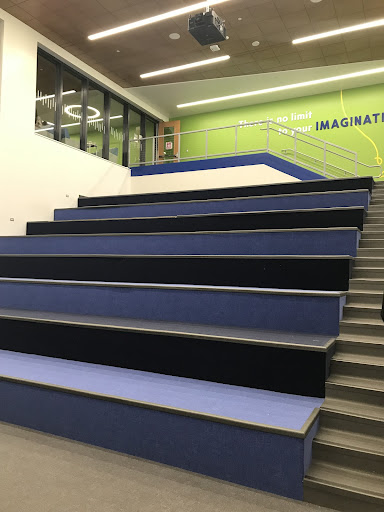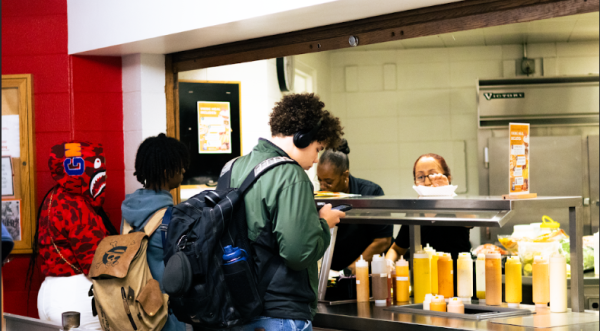H-F Will Have A New Science Wing

The Learning Commons at Lake Zurich High School, one of the schools visited for inspiration for the new wing.
H-F is going to begin building a new science wing, likely starting in the summer of 2023.
The project was first introduced to the Board of Education in June. The current tentative plan is for it to be finished by July 2024 and in use by Aug. 2024.
The science wing may be a net-zero building. School Board President Gerald Pauling said that the Board will apply “for an Illinois Clean Energy Community Foundation Grant that would provide funding for a net-zero building. The grant would provide up to $2 Million to cover the costs associated with use of geothermal energy generating systems.”
If the building is net-zero, it would be a massive accomplishment for H-F.
“There is only one other net-zero building in Illinois, and that is Stevenson High School, so H-F could be the second (or at least one of only a few). We believe net-zero is a good way to distinguish our school and take a leadership role in caring for the environment,” remarked Pauling.
H-F has been doing some renovations to our current science wing and classrooms over the past six or so years, but this will be a much more drastic change. Science Department Chair Kim Smith explained how inspiration has been collected for this project.
“Science and CTE teachers have visited several schools in the past year and a half, looking at their facilities and talking to teachers and students to see what aspects of their science buildings they found beneficial for students and what they would change.” CTE is Career and Technical Education, an example of a CTE class being engineering.
This is a much-needed project, according to science teacher Rick Pavinato, as rooms are currently smaller than what is safe for the number of science students at H-F.
He admits that he is fortunate to have a larger room, “but the other teachers have some very small classrooms…they’re always fighting for space when they try to do a lab or they try to do an activity.”
This is because, according to Smith, our science classrooms “were constructed when fewer students took science classes back in 1959 and were not intended to hold as many students as they do now.” Those outdated classrooms were built to hold a maximum of 24 students, but some have been added or renovated since then.
Therefore, the most prominent feature of the new science wing will be its size. Larger classrooms will ensure that students have the opportunities to perform safe labs without being dangerously close together.
The science wing will have other new features as well, including breakout rooms for students to do group work and other areas to “be outside of the classroom working with students in their own classes or students from other classes,” according to Smith.
“The new science wing will also include more visible science classrooms so that students will be able to see what other classes are doing,” she added.
A large Learning Commons area will be added near the CTE department and will “allow us to bring in scientists and other professionals to meet with students and will provide space for collaboration between different classes,” said Smith.
Larger spaces will provide opportunities for interdepartmental projects.
An example that H-F Principal Clinton Alexander gave was a project based on the Monkeypox epidemic. If a science class would like to study the biology of the virus, a history class would like to study historical trends that precede the virus, and an English class would like to write a narrative on the virus, they could collaborate in this space.









